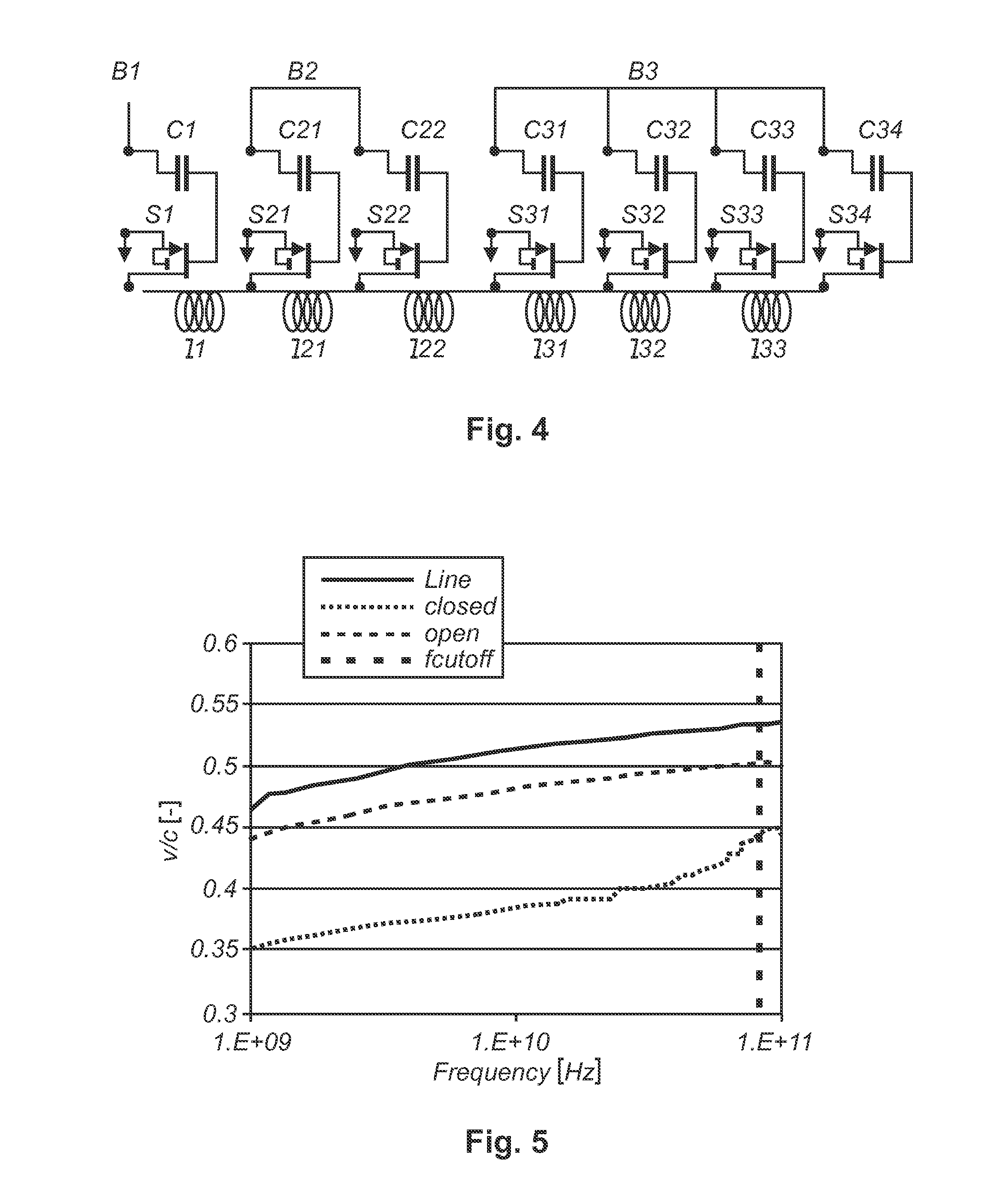Integrated circuit
a technology of integrated circuits and circuits, applied in pulse manipulation, pulse techniques, instruments, etc., can solve the problems of reproducibility and supply rejection, inability to meet the requirements of process specifications or process capabilities, and inability to meet the requirements of accuracy, etc., to achieve the effect of increasing parametric accuracy, increasing yield and increasing accuracy
- Summary
- Abstract
- Description
- Claims
- Application Information
AI Technical Summary
Benefits of technology
Problems solved by technology
Method used
Image
Examples
first embodiment
[0021]FIG. 1 shows a schematic cross section of part of an integrated circuit according to a Here, a many-times-programmable cell having a MOS transistor with a floating gate FG is depicted. The cell can comprises a source S, an access gate AG, a bil line BL and a control gate CG. The floating gate FG may comprise a tunnel oxide TO and is connected to a first low-leakage capacitor that may have a tunnel oxide TO as its dielectric material. However, it should be noted that any other low-leakage capacitor that is substantially larger than the gate-channel capacitance of the MOS and that has sufficient breakdown be sufficient.
[0022]It should be noted that an operation of many-time-programmable cells MTP is very similar to conventional non-volatile memory while the process complexity is much lower (only a single gate-poly is required) and the memory cell is bigger in size. Instead of retaining digital bits, the cell MTP is used according to the invention as a (semi-permanent) switch to...
second embodiment
[0027]FIG. 2 shows a circuit diagram of a switching unit according to a On the left the conceptual CMOS implementation, and on the right a BiCMOS implementation is depicted. The CMOS implementation comprises a first and second transistor, wherein the gates G of the first and second transistor are coupled together. The source and drain of the first transistor are coupled together with the body terminal. The first transistor is implemented as the floating gate. The BiCMOS implementation enables a forming of the capacitor to the floating gate. Hence, the capacitor C1 is implemented between the gate G of the transistor T3 and a base poly BP. To enable a retention of charge the floating gate should be without contacts or any connection to interconnect. Therefore, capacitive coupling to the gate must be achieved with a layer in close proximity. In a CMOS implementation this can be achieved through a MOS gate as depicted on the left side of FIG. 2. A BiCMOS implementation enables some add...
third embodiment
[0050]FIG. 4 shows a circuit diagram of a trimming unit and an inductor unit according to a Here, a trimmable series inductor is depicted. Switches or switching units are grouped in “bits” where the nth bit B1-B3 contains 2n switches S1; S21, S22; S31, S32, S33; S34, wherein each switch is coupled to a first capacitor C11, C21, C22, C31, C32, C33, C34, respectively. Each switching group is coupled to an inductor element, i.e. the switching group B1 is coupled to an inductor element I1, the switching group B2 is coupled to two inductor elements I21, I22 while the switching group B3 is coupled to the inductor elements I31, I32, I33, I34. In other words the numbers of inductor elements correspond to the number of switches.
[0051]Hence, the switching units can be used for connecting an inductive component in series. The drain capacitance of the switching units can lead to a resonance thus limiting the maximum operating frequency for a given resistance in the closed state. To achieve par...
PUM
 Login to View More
Login to View More Abstract
Description
Claims
Application Information
 Login to View More
Login to View More - R&D
- Intellectual Property
- Life Sciences
- Materials
- Tech Scout
- Unparalleled Data Quality
- Higher Quality Content
- 60% Fewer Hallucinations
Browse by: Latest US Patents, China's latest patents, Technical Efficacy Thesaurus, Application Domain, Technology Topic, Popular Technical Reports.
© 2025 PatSnap. All rights reserved.Legal|Privacy policy|Modern Slavery Act Transparency Statement|Sitemap|About US| Contact US: help@patsnap.com



